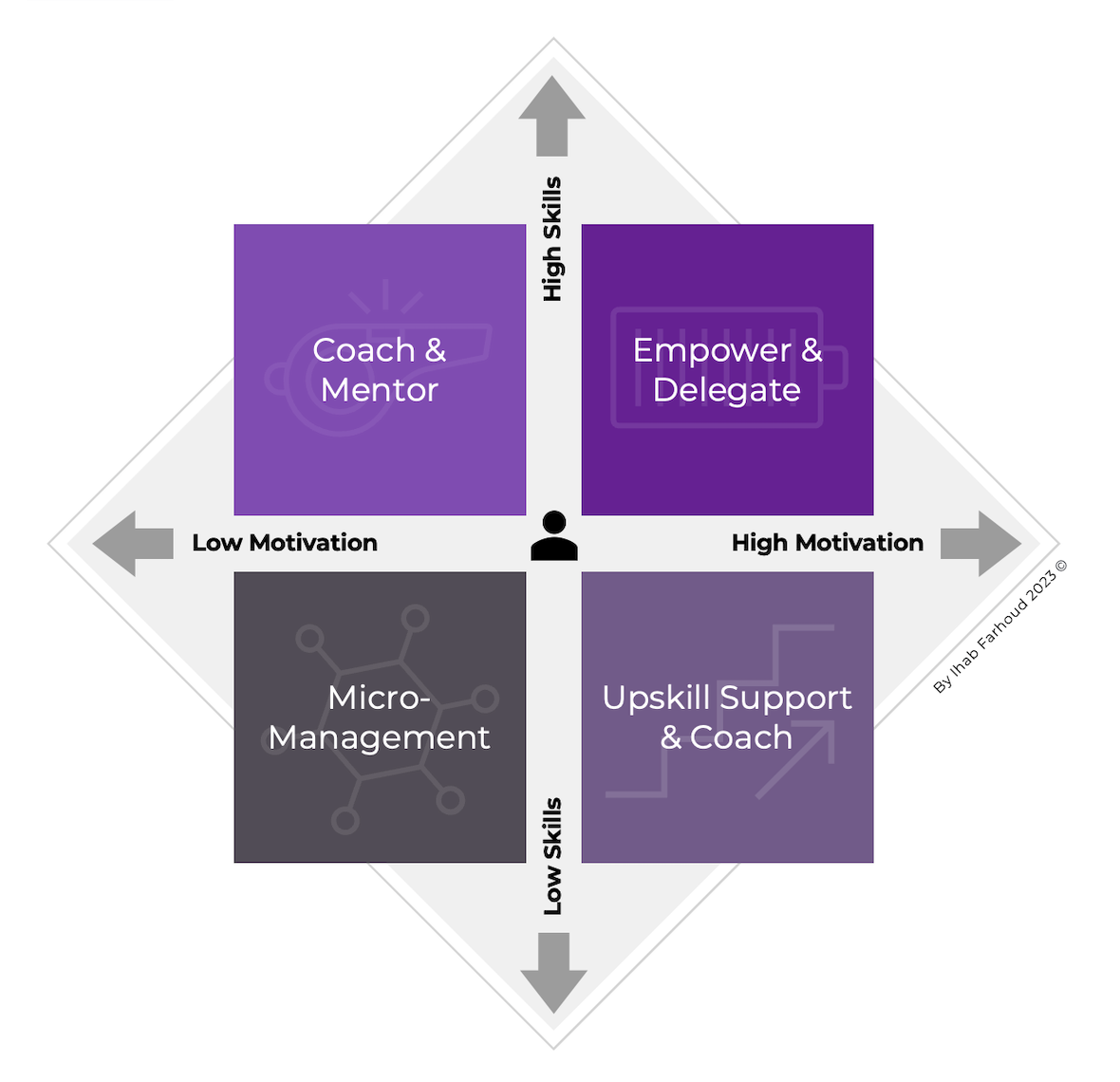This morning, over coffee, I had a great talk with Ihab discussing his presentation where he highlighted the four types of employees and how to tackle each as a manager. We talked about how managers can best work with their employees, focusing on a simple way to think about it. This idea splits employees into four groups, based on their skills and how excited they are about their work.
1. Not Skilled, Not Motivated:
Here, employees don’t have many skills and aren’t very excited about their work. Usually, managers watch these employees closely. But this can sometimes make things worse. It’s like, is there a better way to do this without making them feel trapped?
2. Not Skilled, But Motivated:
These employees are excited but need more skills. For them, managers should be like teachers, helping them learn and grow. It’s all about turning their excitement into skills.
3. Skilled, But Not Motivated:
These employees are good at what they do but aren’t very excited. Here, managers should be more like mentors. They need to find out why these employees aren’t excited and help them feel more connected to their work.
4. Skilled and Motivated:
This is the best case. These employees are good at their job and excited about it. Managers should give them freedom and trust them with more responsibility. This lets them do even better work.
The main part of our talk was about the first group – employees who aren’t skilled or excited. Is micro-management always the best way? Ihab said that at first, you might need to do this, but you should also help them get better and more excited about their work. He suggested slowly giving them more to do and encouraging them along the way in order to move out from this zone.
We also talked about other ideas, like training programs, pairing them with mentors, and setting goals that they can actually achieve. Ihab said it’s important to understand each person’s own problems and help them in a way that fits them best.
Being a good manager is tricky. You have to treat each employee differently, based on what they need. It’s not just about the work; it’s about understanding each person on your team.

